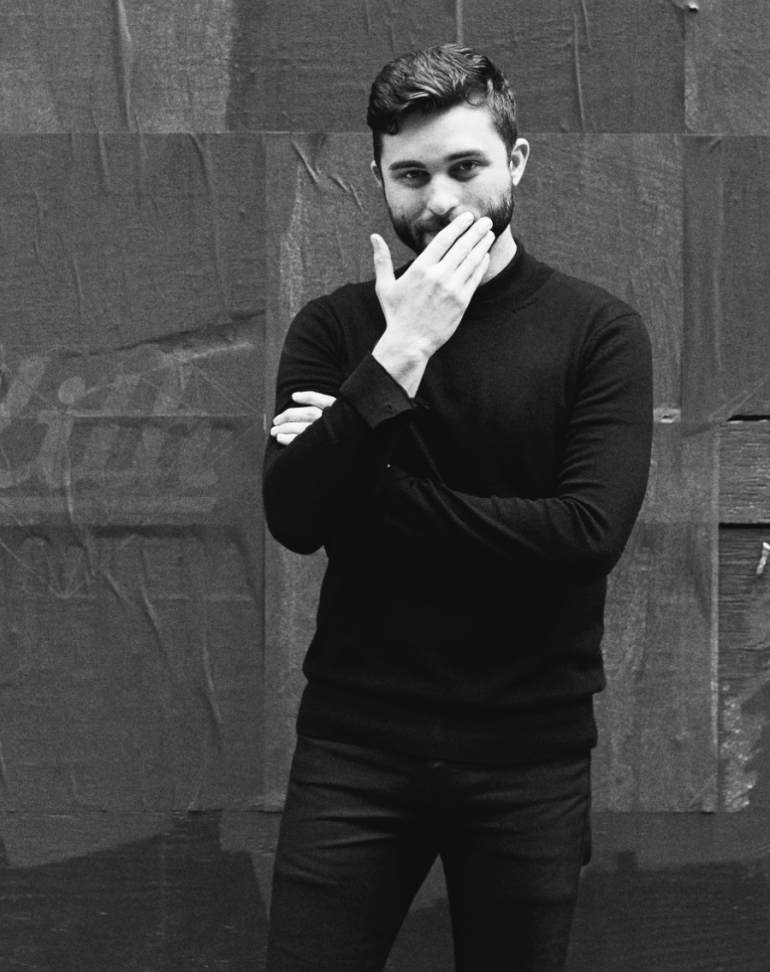SMPL Q&A is a blog feature in which we interview experts on all things relevant to branding, design and simplicity. In this Q&A, we speak with Mike Tyson, design director, about how to stand apart with brand experience design.
What are some steps brands can take in their graphic and experience design to create lasting, standout brands?
This is a common issue with a simple solution. Brand experience designers look at design for inspiration—trends ultimately feed into trends, creating a cycle of regurgitated styles, content and methodologies. If setting yourself apart is the goal, my honest answer is, ironically, to stop reading this article right now. (Sorry, marketing team.)
Instead, take a momentary step away from the world of branding and read Walt Whitman, watch Julia Child, visit the MoMA or listen to Beyoncé. Much like the old adage, “You are what you eat,” the brand imagery you consume is the brand you produce. Innovative and thought-provoking work seldom emerges by chance or imitation. Probe limits and challenge paradigms by reaching outside the typical circle of influence. Uncover how the world’s great artists, thinkers and innovators touch people’s lives, and adapt these ideas to fit your brand.
Artists are seldom concerned with answers. They eschew the definite and invite possibility. Brands and marketers typically strive for the converse: certainty. Herein lies a significant opportunity to look the other way and embrace the open-ended. Rather than dictate a solution, invite your customer to ask a question and discover something new.
When we embrace ambiguity, people are brought into a moment of discovery, creating a rich dialogue and memorable experience. For example, leading up to the release of their recent album, the band Radiohead, who’ve built a reputation as unconventional instigators, unceremoniously deleted their entire internet presence. Their website went blank and every tweet, Instagram photo and Facebook post was gone. What emerged was a tabula rasa for the next chapter. The world was left guessing until they used this attention to slowly reveal segments of their album through video and audio vignettes posted to their social channels. In a hyper-connected world, their choice to erase their digital presence was surprising, provocative and effective—with the album going gold in the UK in just over a month.
Another example of successful ambiguity includes a nearly imperceptible public artwork, playing 24 hours a day and 7 days a week, right in the center of Times Square. Sound artist Max Neuhaus was commissioned to create a sound work within the world-famous intersection back in 1977 where it played continuously for decades before a temporary hiatus from 1992 till it was reinstalled in 2002. Buried underneath the triangular subway grate in the sidewalk, an ambient work of sound art plays continuously, ebbing and flowing among the din of the street life. There is no sign, announcement or credit to the artist. Instead, the piece humbly waits for a tourist to serendipitously notice its presence as it ceaselessly occupies the space between silence and noise. The experience is nothing short of transfixing once noticed—a small, intimate moment between artist and audience amidst one of the busiest blocks in the world.
These examples operate on the margins—they stand out by attempting to disappear. Brands that are overly concerned with visibility blend in with the noise. Thankfully, the world is full of creative solutions to differentiate beyond a gimmicky Twitter account or a “flexible logo.”
What are the key differentiators in brand experience design and visual identities today?
The brands that stand apart are those that demonstrate social and cultural awareness (not in the superficial @BrandsSayingBae way). It’s clear when brands are concerned merely with increasing their market share—and painful to watch them attempt to convince you otherwise. The brands that strive to improve our world are those that stand apart.
I recently had the pleasure of seeing game designer Ken Wong speak at Bloomberg Businessweek’s design conference. Wong shared his work on the wildly successful iPhone game he helped design: Monument Valley. He explained his decision to eschew the typical paradigm of action-oriented video games often celebrating violence, machismo and brute strength to save or avenge a damsel in distress. Instead, Monument Valley is a meditative and poetic strategy game where you are the princess. Rather than killing your opponents and taking what is not yours, you must outsmart your obstacles to ultimately seek forgiveness and return something that didn’t belong to you.
The game was designed to provide an alternative to the typical video game narrative and archetypes. The result is a game that moves against the grain—one that quietly rejects the status quo and humbly offers an enlightened way forward. Brands have the opportunity to strategically evaluate their effect on the world (through their offering, visual identity and marketing) and pivot in a way that will improve our world. The increasingly astute consumer marketplace recognizes and supports those that do so.
In which fields will brand experience design be key to the business’s future success?
I can’t think of an industry where brand design won’t play a critical role moving forward. Design is particularly pertinent to financial services, which will see the obsolescence of their last (and primary) physical consumer touchpoint: the ubiquitous plastic card. These digital financial transactions promise to be safer and more efficient than the stacks of cards weighing down our wallets. But the question has to be asked: how do banks maintain that critical human connection with their customers in these digital interactions, and avoid slipping out of sight without the physical reminder of their existence? This is something only design can solve. American Express continues to engage us in providing future-proofed solutions to this very problem. To this end, we ask ourselves: where are the opportunities to maintain and deepen the company’s relationship with its consumer? Through strategic evaluations of the transactional experience and a brand’s visual identity, brand experience design will play a critical role in shaping that future.
Mike Tyson is a design director at Siegel+Gale.


